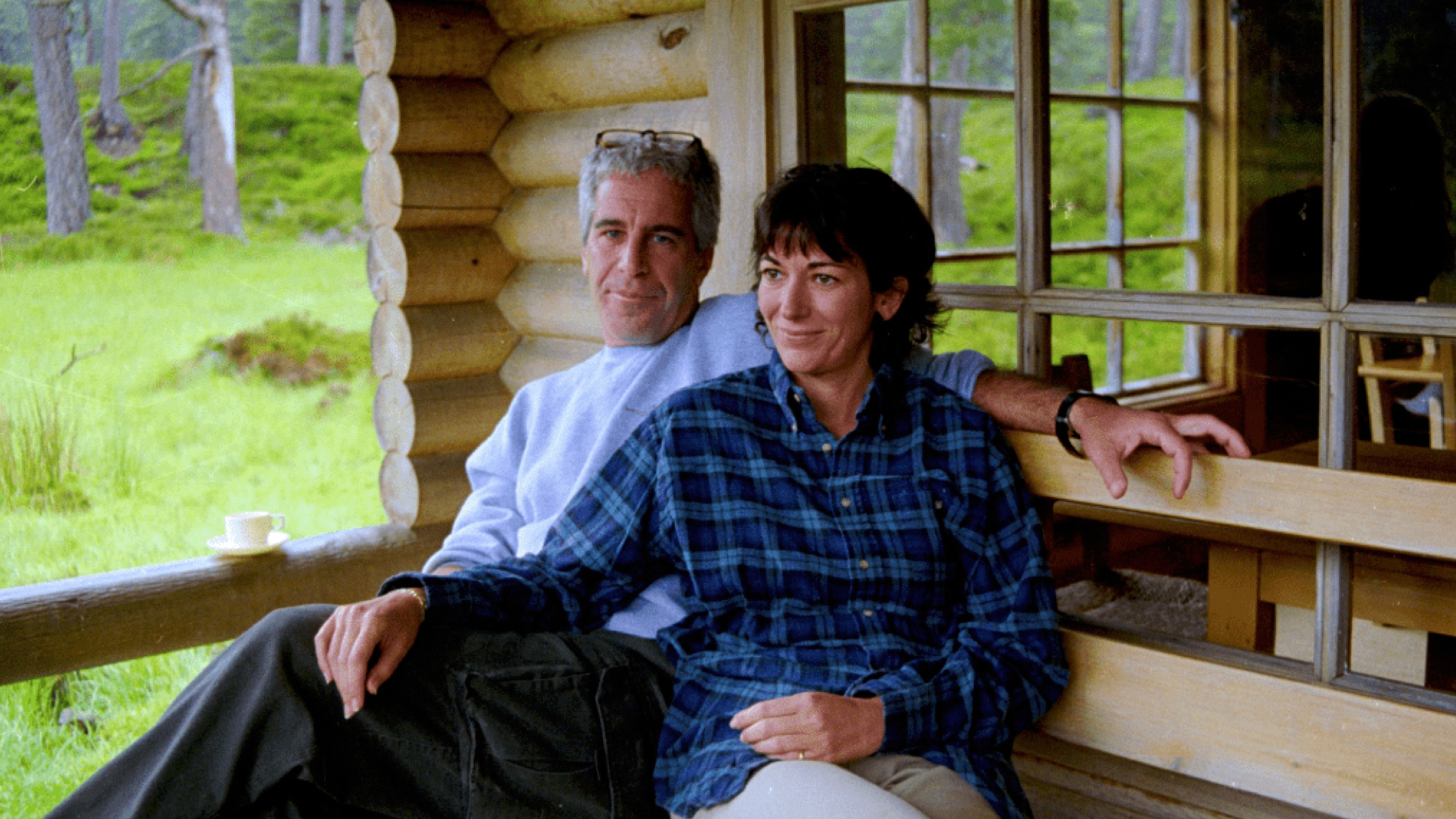Scotland is projected to have a smaller and older population by 2045 if past trends continue, according to a new report published on Wednesday.
The National Records of Scotland (NRS) said growth from migration would no longer offset the growing gap between births and deaths.
Scotland is the only UK country with a projected fall by 2045, with the population set to start declining around 2029.
The figures form part of a new report by the NRS entitled ‘Scotland’s Population 2021’. STV News takes a look at the key findings.
Population
The population of Scotland is projected to peak in 2028 at 5.48 million. It is then projected to fall by 1.8% to 5.39 million by 2045.
Three factors are causing population change in Scotland:
- births: people are having fewer children
- deaths: over the long term people are living longer
- migration: people move to Scotland from the rest of the UK and outside the UK (projected to be in roughly equal numbers)
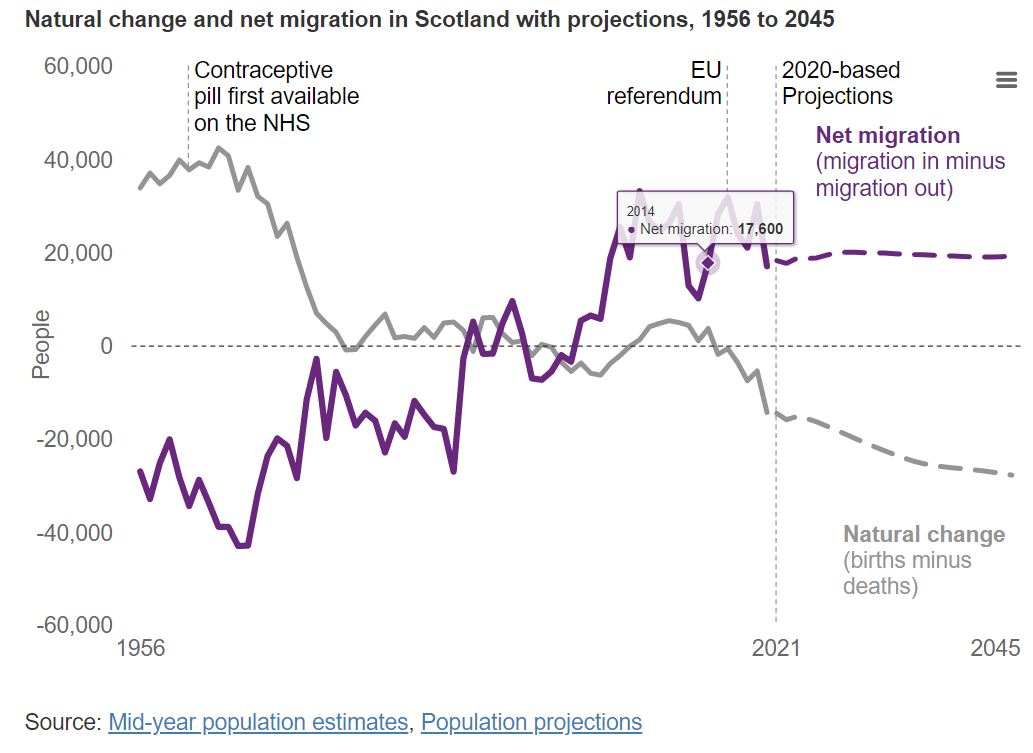 National Records of Scotland
National Records of ScotlandEsther Roughsedge, head of population and migration statistics at the NRS, said: “For the first time in a number of years, we project Scotland’s population to fall in the next decade (starting around 2029).
“Scotland is the only UK country with a projected fall by 2045. We also project that almost half of our 32 local authorities will decline in population over the next decade.
“The population is also ageing. By 2045 we project that there will be fewer children (-22%), roughly the same number of people of working age (-2%), and more people of pensionable age (+21%).”
The NRS projects that almost half of Scotland’s 32 local authorities will decline in population over the next decade.
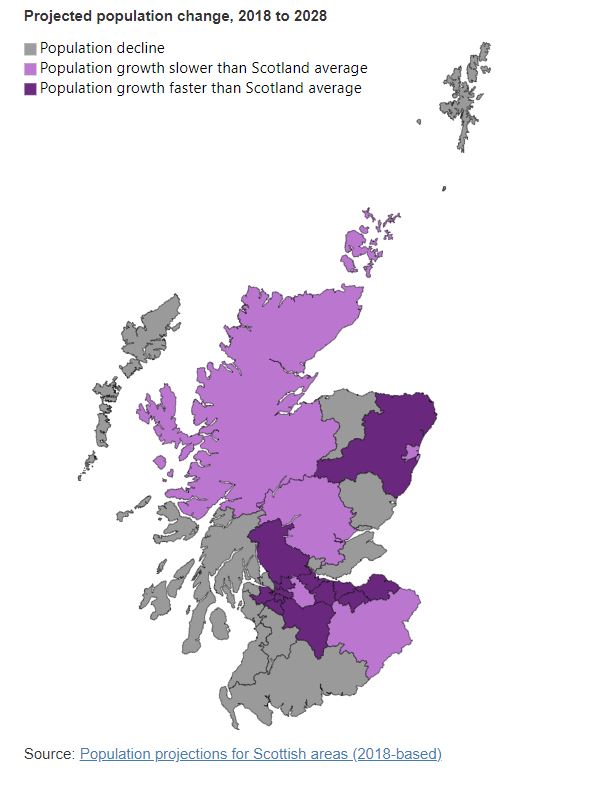 National Records of Scotland
National Records of ScotlandMost of these authorities are in the west and south west of Scotland. They tend to be local authorities with a higher percentage of more deprived areas, or a higher percentage of rural areas.
In contrast, most of the central belt and other urban areas are projected to grow in population, as a result of migration from other council areas, the rest of the UK and outside the UK.
Deprivation
There are still large inequalities in the causes of death between the most and least deprived areas of Scotland, according to the NRS report
Julie Ramsay, head of vital events at the NRS, said: “Mortality rates are about two times as high in the most deprived areas compared to the least deprived areas.
“But for some specific causes of death, we see much larger inequalities. For example, people in the most deprived areas of Scotland are more than 15 times as likely to die from drug misuse than those in the least deprived areas.
“Over the last 40 years, our overall life expectancy has improved and we’re living longer than we used to. But our life expectancy is lower than the rest of the UK and many other countries in western Europe.
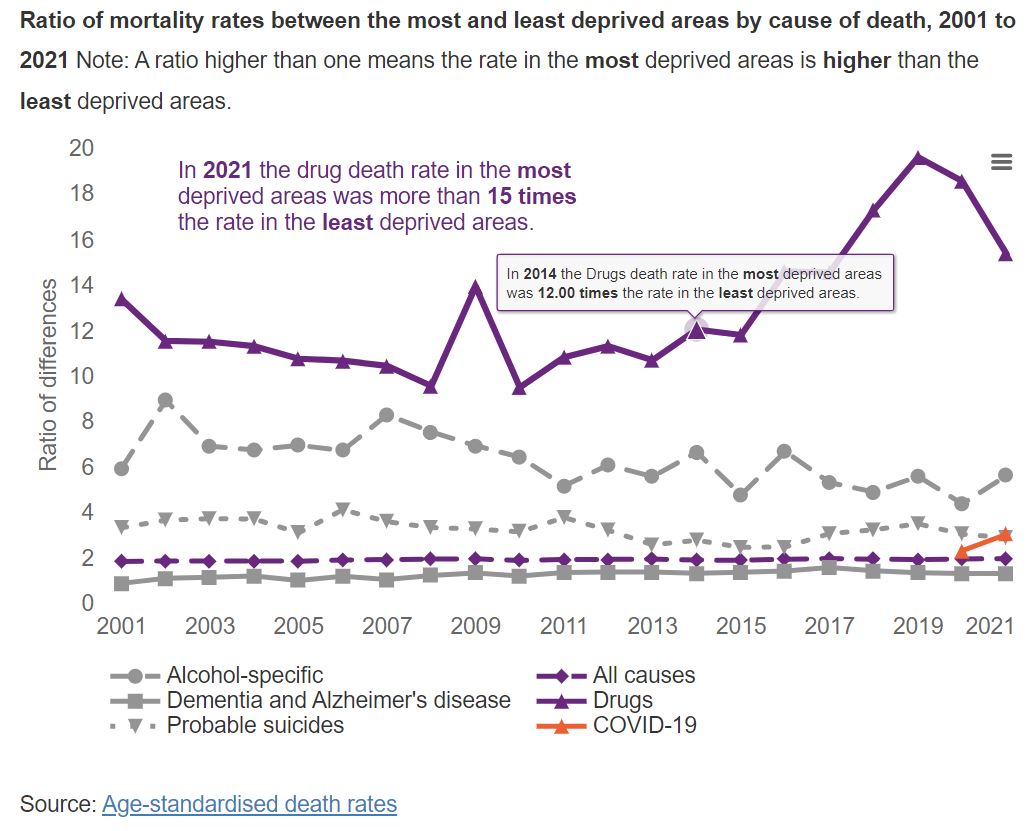 National Records of Scotland
National Records of Scotland“In recent years, life expectancy improvements have stalled and started to reverse. Although this isn’t unique to Scotland.”
Drugs and alcohol deaths
In 2021, the drug death rate in the most deprived areas was 15 times higher than the least deprived areas.
That ratio has increased over the past two decades. In the early 2000s, those in the most deprived areas were around ten times as likely to have a drug misuse death as those in the least deprived areas. In the last year, the gap has narrowed slightly.
Scotland’s drug misuse death rate was over 3.5 times the UK rate and higher than the rates reported for any other EU country (using a different counting method for the EU).
Meanwhile, alcohol-specific deaths were 5.6 times as likely to occur in the most deprived areas of Scotland compared to the least deprived areas in 2021.
Over time, this ratio has generally decreased (from a high of 8.7 in 2002) but has increased in the last few years.
Changes in the ratio are mostly driven by changes in death rates in the most deprived areas. This is because rates in the least deprived areas have remained stable over time.
Covid deaths
The NRS has identified three clear waves of Covid-19 deaths so far.
It says each wave has lasted longer than the last, with the second wave seeing the most deaths so far. Wave three hasn’t ended yet.
Around the same number of Covid-19 deaths occurred in hospitals as care homes (both locations saw 46% of all Covid-19 deaths), during the first wave.
In contrast, 71% of Covid-19 deaths during waves two and three occurred in hospitals.
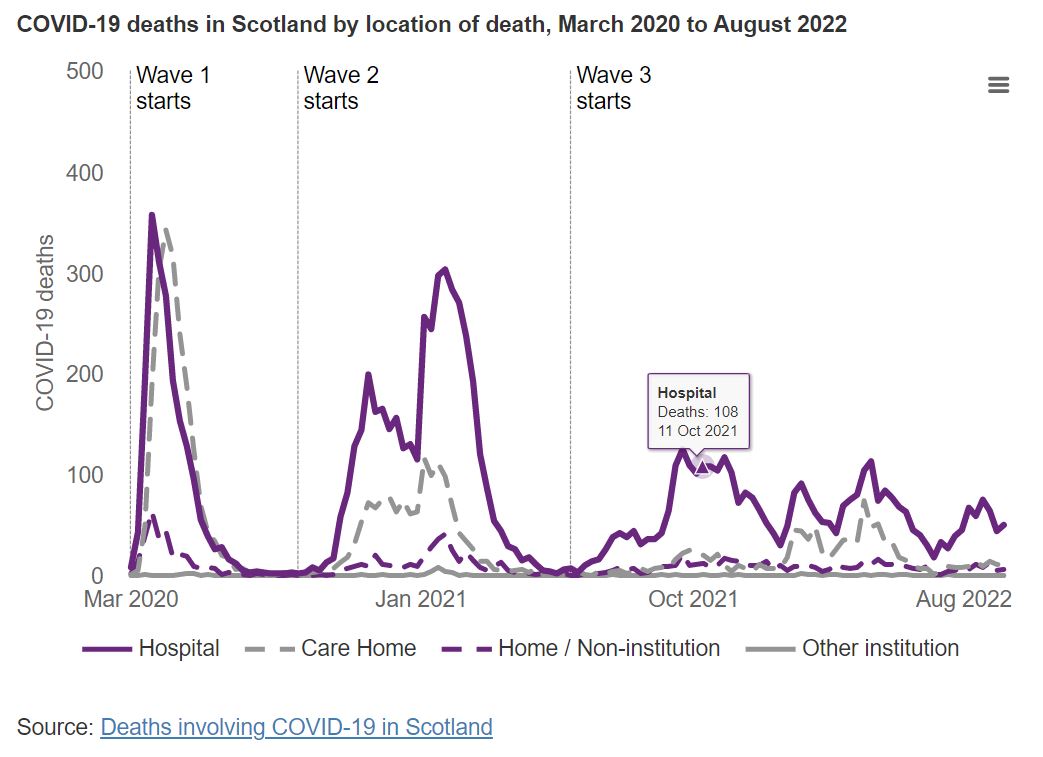 National Records of Scotland
National Records of ScotlandStatistician Daniel Burns said: “Covid-19 has accounted for 8% of all deaths during the pandemic so far (March 2020 to July 2022).
“There have also been excess deaths from some other causes, including cancer and heart disease. Excess deaths are where deaths in the latest year are higher than the previous five-year average.”
The report also noted there were excess deaths from other causes – like cancer and heart disease – during the pandemic.
Even after taking age into account, disabled people were more likely to die with coronavirus.
Those whose daily activities were limited a little were twice as likely to die, while those whose daily activities were limited a lot were three times as likely to die.
Furthermore, between the start of the pandemic and September 2021, deaths of people of Chinese ethnicity and people of Indian ethnicity were almost twice as likely to involve Covid-19 than deaths of people of white Scottish ethnicity.
That increased to almost four times as likely for people of Pakistani ethnicity and almost three times as likely for people of other Asian ethnicity.
Life expectancy
Life expectancy has improved over the last 40 years. In the last ten years improvements have stalled and most recently have started to reverse. The recent fall was mainly due to Covid-19. But the stall was caused by a number of factors:
- past decreases in heart disease deaths have slowed down
- the number of drug-related deaths has increased
- the number of deaths from dementia and Alzheimer’s has increased
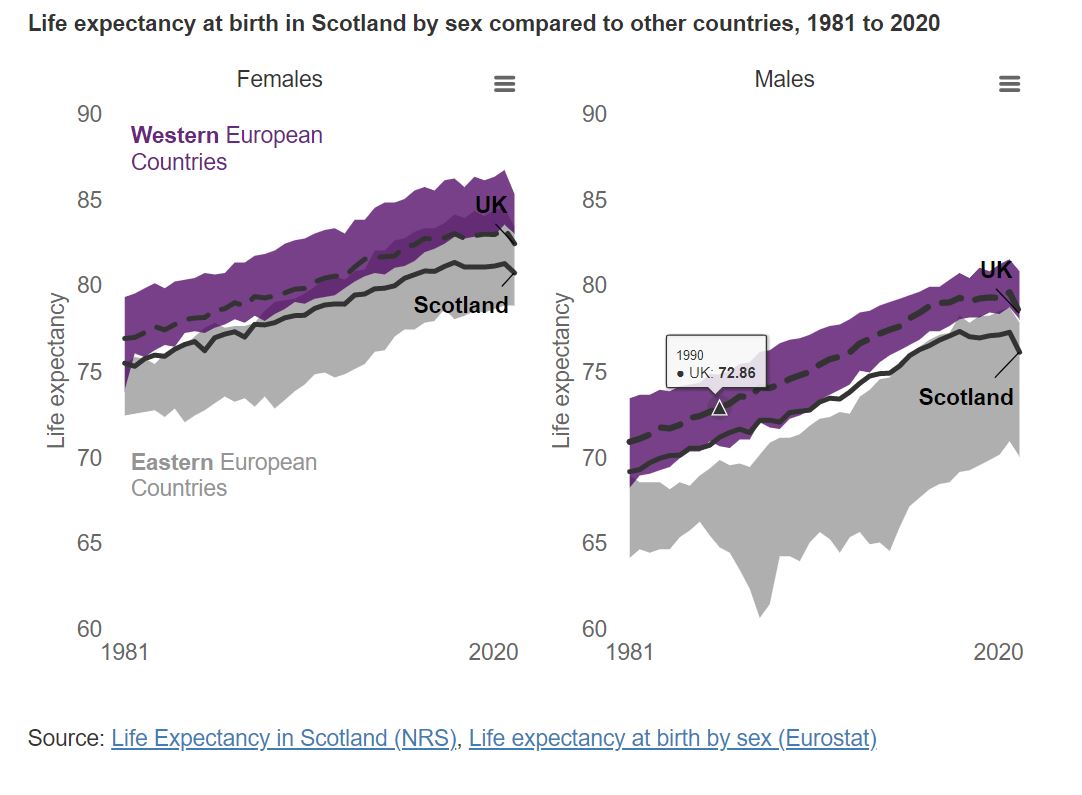 National Records of Scotland
National Records of ScotlandFollow STV News on WhatsApp
Scan the QR code on your mobile device for all the latest news from around the country


 iStock
iStock























